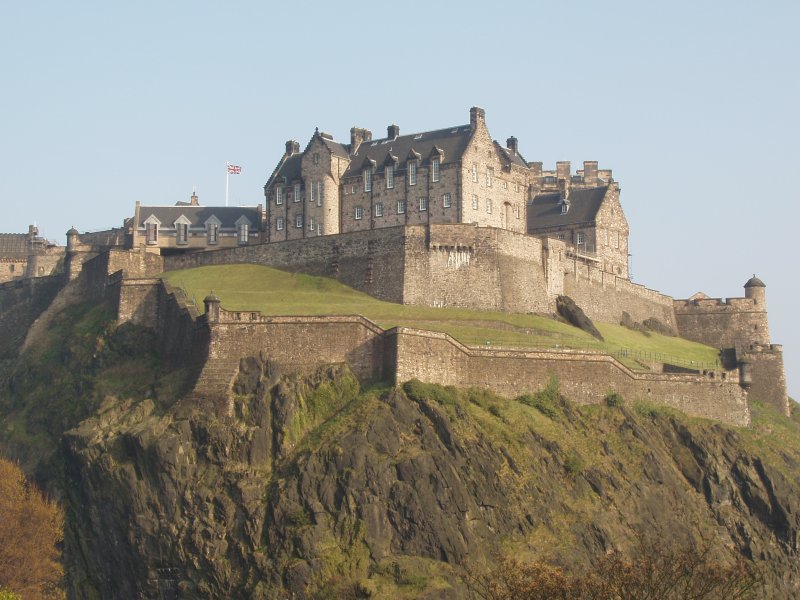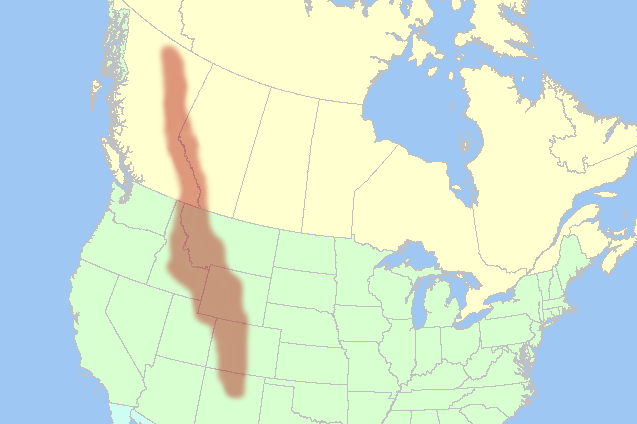
Trafalgar Square, the largest square in London, is often considered the heart of the city.
Ever since the Middle Ages, this area has been a central meeting place. In the middle of the square stands a tall column honoring admiral Nelson.
Read more:
http://www.aviewoncities.com/london/trafalgarsquare.htm
http://www.visitlondon.com/things-to-do/place/283774-trafalgar-square

On this day in 1933, construction starts on what will become one of America's most famous landmarks: the Golden Gate Bridge. When completed in 1937, the Golden Gate has a 4,200-foot-long suspension span, making it the world's longest suspension bridge. Since opening to the public in May 1937, almost 2 billion vehicles have crossed the bridge, in both the north- and southbound directions.
The bridge was named not for its distinctive orange color (which provides extra visibility to passing ships in San Francisco's famous fog), but for the Golden Gate Strait, where the San Francisco Bay opens into the Pacific Ocean. The bridge spans the strait and connects the northern part of the city of San Francisco to Marin County, California.
Prior to the bridge's construction, the only way to travel between these two areas was by ferry boat.
Wall Street is one of the world's most famous streets. Historically known as the center of New York's financial district, Wall Street is often associated with wealth and ambition in America.

How It Got Its Name
 After the Dutch purchased "New Amsterdam" from the Native Americans, a palisade was erected that formed the northern boundary of the new colony. The first "walls" along the street were basic plank fences, but as time passed and tensions grew, a stronger, taller wall was built in order to defend the colony against both the British and the American Indians tribes that still dominated the area. In 1685, after the original palissade was torn down and replaced with a new wall, a new street was created parallel with the wall, aptly named Wall Street. The British removed the defensive wall in 1699.
After the Dutch purchased "New Amsterdam" from the Native Americans, a palisade was erected that formed the northern boundary of the new colony. The first "walls" along the street were basic plank fences, but as time passed and tensions grew, a stronger, taller wall was built in order to defend the colony against both the British and the American Indians tribes that still dominated the area. In 1685, after the original palissade was torn down and replaced with a new wall, a new street was created parallel with the wall, aptly named Wall Street. The British removed the defensive wall in 1699.How It Got Its Reputation
Records show that in the years after the Revolutionary War, traders and speculators would gather under a particular buttonwood tree that sat at the foot of Wall Street. They soon formed The Buttonwood Association (1792), which is believed to be the roots of the New York Stock Exchange, whose headquarters has been located on Wall Street for centuries.
Buildings along Wall Street
By the late 19th and early 20th centuries, Wall Street was "the place" to be if you were a large financial institution or other big business. So many buildings sprung up on this tip of Manhattan that the Wall Street district began to boast its own distinct skyline, separate from the buildings in Midtown.
People like J.P Morgan built headquarters like the one at 23 Wall Street, which was - for decades - the most important financial institution in the country. (One can still see the pockmarks on the building, left there from an unsolved bombing that occurred in 1920.)
Other notable buildings include the columned Federal Hall, originally built to house City Hall and its offices. The New York Stock Exchange (NYSE) Building is also quite grand, built by George B. Post in a neoclassical style


that earned it a spot on the National Register of Historic Places. Equally as notable is the ornate40 Wall Street, once home to the Bank of Manhattan.
People like J.P Morgan built headquarters like the one at 23 Wall Street, which was - for decades - the most important financial institution in the country. (One can still see the pockmarks on the building, left there from an unsolved bombing that occurred in 1920.)
Other notable buildings include the columned Federal Hall, originally built to house City Hall and its offices. The New York Stock Exchange (NYSE) Building is also quite grand, built by George B. Post in a neoclassical style

Federal Hall

Charging Bull
The Charging Bull Statue
One of the Financial District's most famous symbols is the 'Charging Bull' Statue (The bull represents a bull market, a constantly rising market).
Inspired by the stock market crash in 1987, sculptor Arturo Di Modica created the 7,000-pound (3175kg) bull statue as a token of optimism. In 1989 he placed it - without authorisation - in front of the New York Stock Exchange in Wall Street. Police removed the statue but thanks to a public outcry it was reinstalled, but this time on Bowling Green, a small square annex park near Wall Street. The statue has become one of Lower Manhattan's most popular attractions.
Inspired by the stock market crash in 1987, sculptor Arturo Di Modica created the 7,000-pound (3175kg) bull statue as a token of optimism. In 1989 he placed it - without authorisation - in front of the New York Stock Exchange in Wall Street. Police removed the statue but thanks to a public outcry it was reinstalled, but this time on Bowling Green, a small square annex park near Wall Street. The statue has become one of Lower Manhattan's most popular attractions.

Edinburgh Castle is a historic fortress which dominates the skyline of the city of Edinburgh, Scotland from its position on theCastle Rock. Archaeologists have established human occupation of the rock since at least the Iron Age (2nd century AD), although the nature of the early settlement is unclear. There has been a royal castle on the rock since at least the reign ofDavid I in the 12th century, and the site continued to be a royal residence until the Union of the Crowns in 1603. From the 15th century the castle's residential role declined, and by the 17th century it was principally used as military barracks with a large garrison. Its importance as a part of Scotland's national heritage was recognised increasingly from the early 19th century onwards, and various restoration programmes have been carried out over the past century and a half. As one of the most important strongholds in the Kingdom of Scotland, Edinburgh Castle was involved in many historical conflicts from the Wars of Scottish Independence in the 14th century to the Jacobite Rising of 1745. It has been besieged, both successfully and unsuccessfully, on several occasions.
Read more:
http://www.edinburghcastle.gov.uk/

The Rocky Mountains are located in western North America. They are know for their beautiful scenery with mountains, trees and big game. People visit the Rockies for many recreational activities like hiking, hunting, camping, skiing and lots of other sports.
The Rocky Mountains have unpredictable weather which can change rapidly. As with other highland climates, the climate changes with increasing altitude. In general, the Rockies have mild summers, cold winters and a lot of precipitation.
The Rockies have very different seasons. In the winter there is deep snow, high winds, and sudden blizzards are common. At night it can get to -35û F or below! In the spring there is unpredictable weather. It could be wet or dry, cold or warm. In the summer there are sunny mornings, afternoon thunderstorms and clear nights. In the fall there are cool, crisp days, wind and decreasing precipitation.
There is lots of vegetation. The forests are full of pine trees, firs and spruces.Plants are very sturdy, most clinging to rock or hard soil.
Read more:
http://www.nps.gov/romo/index.htm
No hay comentarios:
Publicar un comentario